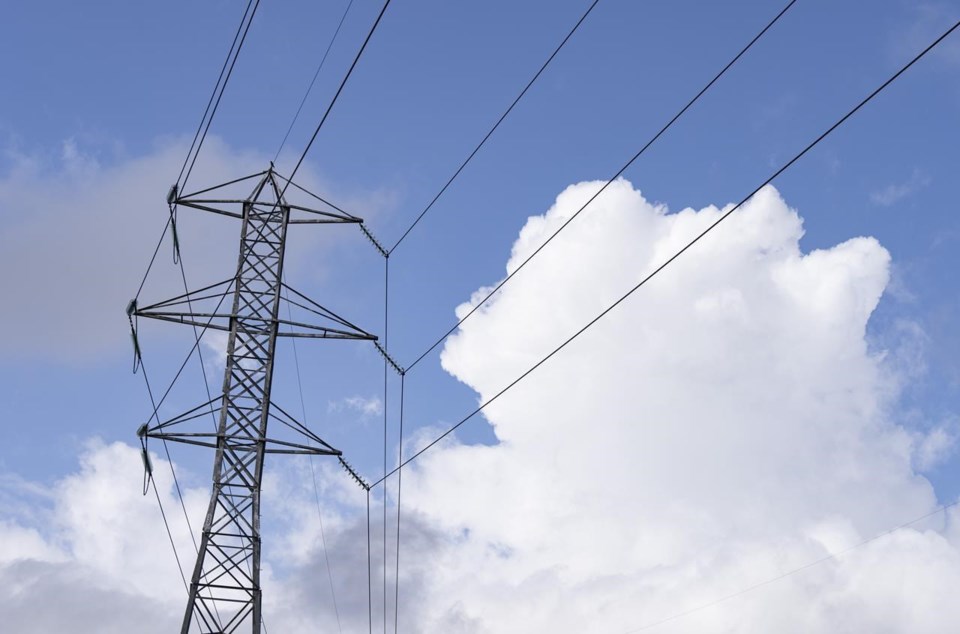Ottawa is considering alterations to its proposed clean-electricity regulations after consultations with industry, opening the door to more flexibility for individual power generators.
"We can still get to the same aim," said Oliver Anderson, a spokesman with Environment and Climate ChangeCanada.
The proposed changes, released Friday, would change several provisions that industry and provincial governments objected to in the original version.
The changes suggest dropping intensity-based standards from greenhouse-gas emissions limits. That means generators would no longer be forced to meet a single standard of how much carbon is emitted per unit of energy.
Instead, each generator would be assigned an annual emissions limit.
As well, companies that own a number of generators would be allowed to pool emissions from facilities operating in the same jurisdiction. Companies would also be allowed to buy carbon offsets to compensate for overshooting their assigned limits.
The government is also considering changes to how new plants are brought in under the regulations.
Under the previous scheme, operators were concerned about the requirement that all generation would have to either be renewable or be equipped with carbon abatement by 2035. They argued that projects already under construction would be disadvantaged and could be left stranded once the new rules took effect.
The government now proposes a time-limited exemption to that rule for fossil-fuel generators that come into operation before 2025.
"Any fossil fuel-burning electric generation built before 2025 can operate for 20 years without having the regulations apply to it," Anderson said. "There could be a bit of wiggle room on the start date."
Industries that generate their own power and feed extra back into the grid are also affected by the proposals.
Previously, all generated power would have been affected by the regulations. Under the suggested changes, only power that gets fed back into the grid is affected.
Finally, small generators producing under 25 megawatts would still be exempted. But any new units at the same facility collectively generating more than that would have to follow the regulations.
Anderson said the government hasn't calculated how the changes would affect greenhouse-gas emission reductions.
"That's part of what we're goingto be consulting on, to see what the impact would be," he said. "The department has a strong sense this puts us in the same ballpark."
The government is asking industry to respond to the suggested changes by March 15.
They come after sharp criticism of the initial proposals.
Both Alberta and Saskatchewan said it isn't possible for their grids to achieve net-zero by 2035 without hurting reliability or costing their residents a fortune.
Alberta Environment and Protected Areas Minister Rebecca Schulz said the proposed changes don't alter her opposition.
"Instead of learning from yet another failure, (Environment and Climate Change) Minister (Steven) Guilbeault has offered an 11-page report that commits to zero meaningful corrections," she said in an emailed statement.
"The proposed regulations still put our province’s electricity grid at unacceptable risks."
Schulz said provinces have exclusive jurisdiction over electricity, although in a ruling on the federal carbon price the Supreme Court said Ottawa can regulate greenhouse gases.
University of Calgary energy economist Blake Shaffer was more complimentary.
"The design changes being considered are a step in the right direction towards providing more flexibility while still keeping the goal of reducing emissions from electricity generation," he said in an email.
Schaffer said moving to an emissions cap instead of an intensity-based target is a good move that he'd like to see extended.
"Rather than a certain number of tonnes per calendar year, make it some amount over a longer period, say three years, so that fleets can better manage across different periods with different conditions (such as) droughts," he wrote.
Climate advocates welcomed the new proposals.
“The revised design ... is a welcome change that will deliver more flexibility for grid operators in order to protect reliability and support affordability," said Jason Dion, research director for the Canadian Climate Institute, who called for finalizing the regulations as early as possible.
Evan Pivnick of Clean Energy Canada also called for the regulations to be completed quickly, but warned changes shouldn't compromise emissions reduction.
"Flexibility should be balanced with the necessary stringency, and more details on the new proposal are needed to determine if the former compromises the latter."
This report by The Canadian Press was first published Feb. 16, 2024.
— By Bob Weber in Edmonton
The Canadian Press




